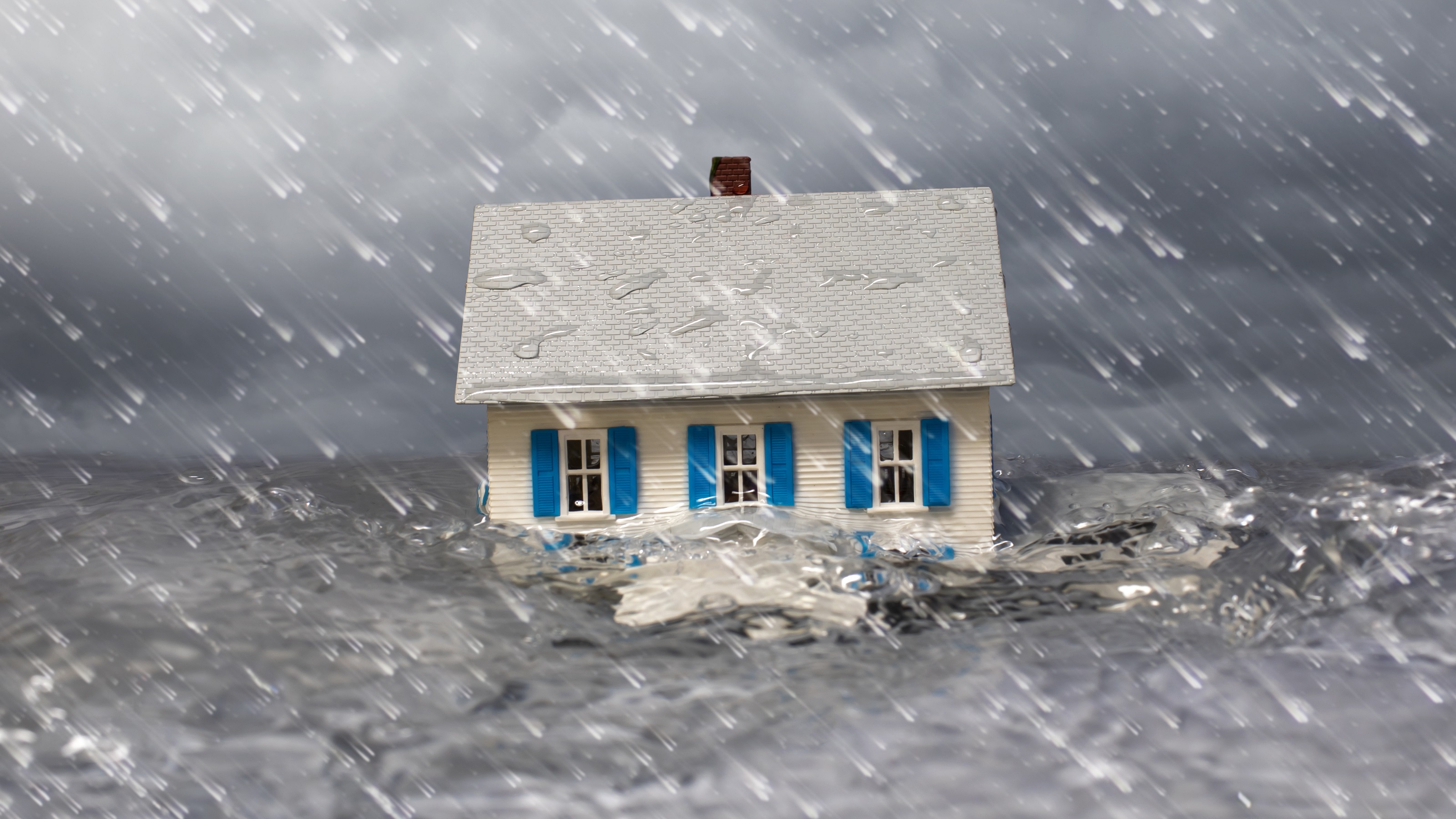After the Disaster: An Expert's Guide to Deciding Whether to Rebuild or Relocate
Homeowners hit by disaster must weigh the emotional desire to rebuild against the financial realities of insurance coverage, unexpected costs and future risk.


A home is more than an asset — it’s where milestones are celebrated, memories are made, and a sense of stability is anchored. The emotional and financial impact can be profound when a natural disaster strikes.
And once the immediate damage is assessed, a more complex question emerges: Should we rebuild or begin again somewhere else?
This is rarely a simple decision. It’s shaped by more than insurance coverage or rebuilding costs; it touches deeply personal considerations around security, legacy and long-term vision.
From just $107.88 $24.99 for Kiplinger Personal Finance
Become a smarter, better informed investor. Subscribe from just $107.88 $24.99, plus get up to 4 Special Issues

Sign up for Kiplinger’s Free Newsletters
Profit and prosper with the best of expert advice on investing, taxes, retirement, personal finance and more - straight to your e-mail.
Profit and prosper with the best of expert advice - straight to your e-mail.
The Kiplinger Building Wealth program handpicks financial advisers and business owners from around the world to share retirement, estate planning and tax strategies to preserve and grow your wealth. These experts, who never pay for inclusion on the site, include professional wealth managers, fiduciary financial planners, CPAs and lawyers. Most of them have certifications including CFP®, ChFC®, IAR, AIF®, CDFA® and more, and their stellar records can be checked through the SEC or FINRA.
The emotional undercurrent
For many, the instinct to rebuild is tied to the desire for normalcy and control after upheaval. It can offer a sense of progress, of reclaiming what was lost.
But it also means returning to a place marked by trauma and uncertainty. Some find healing in restoration, others in a new beginning.
Regardless of financial flexibility, emotional readiness matters. Is rebuilding truly the right path or simply the most familiar one?
What your insurance allows
Many policyholders are surprised to discover how insurance works after a disaster. Standard policies typically require you to rebuild on the existing foundation.
In other words, your coverage is designed to restore what was there, not fund a move or build elsewhere.
While useful, FEMA assistance is intended only to help repair or replace a primary residence, not purchase a new home.
Some policies include “cash-out” or “agreed value” provisions, which allow you to receive the replacement value and rebuild in a different location. These features are not common and should be reviewed in detail with an experienced insurance professional.
One homeowner we know discovered — almost by chance — that their broker had included this provision in their policy. It turned out to be a fortunate surprise, as it gave them the flexibility to relocate and rebuild elsewhere after the California fires early this year.
Tip: Having a full understanding of your policy, before disaster strikes, can make a world of difference. Schedule an annual review with your insurance team or CFP® as part of your broader wealth planning process.
Rebuilding: What it really costs
Even with strong coverage, rebuilding can be complicated. Labor and materials are often in short supply after a disaster, driving up costs and delaying timelines.
For those used to custom finishes and high standards of workmanship, compromises can feel especially frustrating.
Local regulations may also require you to rebuild public infrastructure, such as sewer lines or sidewalks.
One of our wealth managers, who personally experienced the aftermath of the California fires, noted that many homeowners were surprised to learn that insurance didn’t cover these city-mandated costs.
While financing is often available through government loans at relatively low interest rates, these added expenses can still catch families off guard.
And while immediate costs are top of mind, it’s equally important to plan for rising insurance premiums. Insurers adjust rates to reflect increased risk, particularly in areas prone to wildfires, hurricanes or floods.
This trend isn’t hypothetical — it’s already being implemented in states like California.
Rethinking risk and resilience
After a major loss, it’s worth re-evaluating your relationship with risk. Rebuilding in the same location may offer emotional closure, but is it sustainable?
Some homeowners are opting to relocate within the same community to areas less exposed to future events. Others are incorporating climate-resilient materials and designs into their rebuilds.
These choices aren’t just about safety — they can also improve long-term property value and reduce future insurance premiums.
Looking for expert tips to grow and preserve your wealth? Sign up for Building Wealth, our free, twice-weekly newsletter.
Still others choose to rent for a period while exploring their options. This approach offers continuity and access to community resources, without the pressure of an immediate real estate decision.
If the homeowner wishes to stay in the area but outsource the risk, selling the property and renting is a good option.
Resources beyond insurance
Families navigating recovery often benefit from support outside the traditional system. Nonprofits, foundations and private organizations may provide materials, funding or logistical help that eases the burden of rebuilding.
Groups like Rebuilding Together focus specifically on assisting with long-term recovery efforts.
Your advisory team — wealth manager, estate attorney, CPA — can also help coordinate resources, from tapping into philanthropic networks to evaluating tax and estate implications of relocation or rebuilding.
A decision that shapes the future
Choosing whether to rebuild or relocate isn’t just about structures — it’s about values, stability and vision. It requires thoughtful consideration of emotional priorities, financial strategy and environmental risk.
Talk with your trusted advisers. Consider the full picture — practical and personal.
Most importantly, give yourself the space to make a decision that reflects your long-term goals and your family’s future well-being.
Related Content
- How to Prepare For a Hurricane and Other Natural Disasters
- How to Deal With Property Insurance Claims After Wildfires
- Retirees, Be Prepared for a Natural Disaster
- How to Protect Your Home from Natural Disasters with the Right Insurance
- Post-Disaster Financial Planning: How to Protect Your Assets
Profit and prosper with the best of Kiplinger's advice on investing, taxes, retirement, personal finance and much more. Delivered daily. Enter your email in the box and click Sign Me Up.

Mallon FitzPatrick leads Robertson Stephens’ Wealth Planning Team and delivers comprehensive wealth planning solutions for high-net-worth and ultra-high-net-worth clients. He collaborates with clients to develop a strategy that integrates tax planning, risk management, philanthropy, liquidity and balance sheet management, estate planning and investments. Ultimately, the client is provided with a cohesive wealth plan that helps increase the likelihood of experiencing good outcomes, meets their objectives and aligns with their preferences.
-
 3 Ways to Stretch the 2026 Social Security COLA For Your Budget
3 Ways to Stretch the 2026 Social Security COLA For Your BudgetThree steps retirees can take to stretch the Social Security COLA to fit their budgets.
-
 How to Keep Your Charitable Giving Momentum Going All Year
How to Keep Your Charitable Giving Momentum Going All YearInstead of treating charity like a year-end rush for tax breaks, consider using smart tools like DAFs and recurring grants for maximum impact all the year.
-
 Uber Takes Aim at the Bottom Lines of Billboard Lawyers
Uber Takes Aim at the Bottom Lines of Billboard LawyersUber has filed lawsuits and proposed a ballot initiative, in California, to curb settlements it claims are falsely inflated by some personal injury lawyers.
-
 Giving Tuesday Is Just the Start: An Expert Guide to Keeping Your Charitable Giving Momentum Going All Year
Giving Tuesday Is Just the Start: An Expert Guide to Keeping Your Charitable Giving Momentum Going All YearInstead of treating charity like a year-end rush for tax breaks, consider using smart tools like DAFs and recurring grants for maximum impact all the year.
-
 Uber Takes Aim at the Bottom Lines of Billboard Personal Injury Lawyers
Uber Takes Aim at the Bottom Lines of Billboard Personal Injury LawyersUber has filed lawsuits and proposed a ballot initiative, in California, to curb settlements it claims are falsely inflated by some personal injury lawyers.
-
 Dow Slides 427 Points to Open December: Stock Market Today
Dow Slides 427 Points to Open December: Stock Market TodayThe final month of 2025 begins on a negative note after stocks ended November with a startling rally.
-
 11 Cities With the Cheapest Groceries in the US
11 Cities With the Cheapest Groceries in the USIf you live in one of these 11 cities, you're paying less than the rest of the country to keep your fridge stocked.
-
 A Financial Adviser's Health Journey Shows How the 'Pink Tax' Costs Women
A Financial Adviser's Health Journey Shows How the 'Pink Tax' Costs WomenFact: Women pay significantly more for health care over their lifetimes. But there are some things we can do to protect our health and our financial security.
-
 I'm a Cross-Border Financial Adviser: 5 Things I Wish Americans Knew About Taxes Before Moving to Portugal
I'm a Cross-Border Financial Adviser: 5 Things I Wish Americans Knew About Taxes Before Moving to PortugalMoving to Portugal might not be the clean financial break you expect due to U.S. tax obligations, foreign investment risks, lower investment yields and more.
-
 What to Make of a Hot IPO Market
What to Make of a Hot IPO MarketThis year's crop of initial public offerings could be even dicier than usual because of a skew toward tech and crypto.
-
 How to Position Your Portfolio for Lower Interest Rates
How to Position Your Portfolio for Lower Interest RatesThe Federal Reserve is far from done with its rate-cutting regime. This is how investors can prepare.